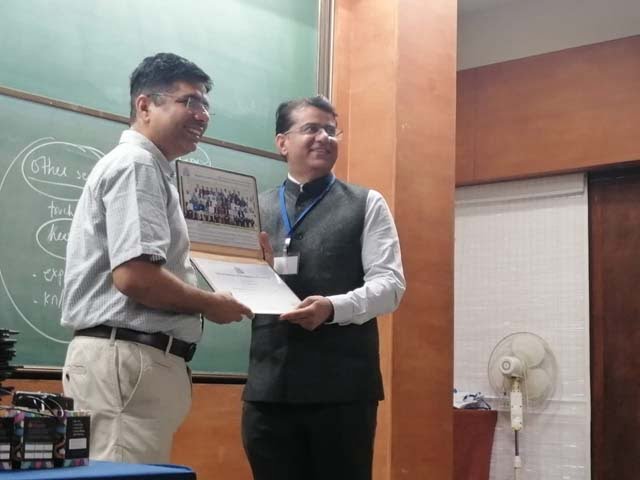Summer Sickness: How Contaminated Food and Drinks Can Make You Sick
Reading Time: 3 minutes Spread the love Summer Sickness: How Contaminated Food and Drinks Can Make You Sick. Summer brings sunshine and joy, but it also…
Dr AvinashTank, is a super-specialist (MCh) Laparoscopic Gastro-intestinal Surgeon,
The primary site of TB is usually lung, from which it can get spread into other parts of the body. Approximately 20% of cases with abdominal TB have associated TB of lung. The abdominal TB usually occurs in four forms: tuberculous lymphadenopathy (large size glands) , peritoneal tuberculosis, gastrointestinal (GI) tuberculosis and visceral tuberculosis involving the solid organs. Usually a combination of these findings occurs in any individual patient.
Abdominal TB can be acquired from any one of the route: by ingestion of infected food or milk (primary intestinal tuberculosis), by ingestion of infected sputum (secondary intestinal tuberculosis), spread via blood from distant tubercular organ or contagious spread from infected adjacent tubercular foci (like infected fallopian tubes in females). Risk of TB in more in a person if is suffering from low immunity like acquired immunodeficiency syndrome (AIDS) & cancer.
The diagnosis of intestinal TB can be difficult as it presents with nonspecific clinical and radiological features and requires high degree of suspicion for diagnosis. Abdominal TB doesn’t have specific symptoms in the beginning of the disease. It’s usually diagnosed when it progress into various complications like bleeding from ulcers or blockage of intestine by narrowing of affected intestine.
Diagnosis is confirmed by isolating the TB germ from the digestive system by either a biopsy or endoscopy. However, other supportive tests that may be done are the blood test, Mantoux test, Chest X-Ray, Abdominal X-Rays (with or without barium), scans such as ultrasound and CT scan & fluid tests.
Biopsy: Biopsy is the best way to establish the diagnosis of abdominal tuberculosis. The methods of biopsy include endoscopic GI mucosal biopsy, image-guided percutanous biopsy, endoscopic ultrasound guided biopsy, and surgical (open or laparoscopic) biopsy. The caseation necrosis in granulomas is the histologic hallmark of TB.
Blood Tests: These are nonspecific and shows raised erythrocyte sedimentation rate, low Hemoglobulin (anemia) and low protein levels (hypoalbuminemia).
Fluid Test: Tubercular fluid is tested for protein level, cell count level, ADA levels and tubercular organism and its culture report.
The tubercular ascitic fluid has protein more than 3 g/dL, with a total cell count of 150-4000/μL and consists predominantly of lymphocytes. The ascitic fluid to blood glucose ratio is less than 0.96 and serum ascitic albumin gradient is less than 1.1 g/dL. The yield of organisms on smear and culture is low. Staining for acid fast bacilli is positive in less than 3% of cases and a positive culture is seen in only 20% of cases. Ascitic fluid adenosine deaminase (ADA) levels are elevated in tubercular ascites. Serum ADA level above 54 U/L, ascitic fluid ADA level above 36 U/L and an ascitic fluid to serum ADA ratio more than 0.98 are suggestive of tuberculosis. However, in cases of co-infection with HIV, ascitic ADA levels can be normal or low. Also, falsely high values can be seen in malignant ascites. Interferon-γ levels are also elevated in tubercular ascites. The sensitivity and specificity increased by combining ascitic fluid ADA and interferon-γ assay.
Molecular and immunological techniques are used for the rapid diagnosis of abdominal TB. It can be tested in any body fluid suspected to have TB, or affected body tissue like lymphnode, thickened omentum or mesentery. Multiplex PCR has sensitivity and specificity of 90% and 100%, respectively in confirmed (AFB/culture/histopathology) cases of gastrointestinal TB and positive results in 72.41% of the suspected gastrointestinal TB case.
Ultrasound: Ultrasound is an initial investigation to pickup lymphadenopathy, tubercular ascites, peritoneal thickening, omental thickening and bowel wall thickening in some cases.
Barium studies used to be gold standard in diagnosing strictures, fistulae, erosions, etc. But now Contrast enhanced CT and CT enterography provide more information not only of intestine but also about surrounding organs.
Medical treatment: Abdominal TB is primarily managed with medical treatment. Specific medical treatment for tuberculosis is known as Anti-tubercular treatment (ATT) is started. A course for at least 6 month duration should be completed. For initial 2 month, 4 drugs are given (isoniazid, rifampicin, pyrazinamide and ethambutol). In some cases treatment may be extended upto 9 to 12months.
Surgical treatment: Surgery is usually reserved for those cases where it is absolutely indicated as in cases of nonhealing ulcer with ongoing bloodloss, non-resolving intestinal obstruction, perforation and abscess or fistula formation.
The surgeries performed in the gastrointestinal TB are of three types.

Experience
Award & Presentations
Satisfied Families
Successful Surgeries

Endoscopy
Reading Time: 3 minutes Spread the love Summer Sickness: How Contaminated Food and Drinks Can Make You Sick. Summer brings sunshine and joy, but it also…
Reading Time: 2 minutes Spread the love Celebrities underwent Gallbladder Stone Surgery. While celebrities may seem to live charmed lives, they’re just as susceptible to everyday…
Reading Time: 5 minutes Spread the love Mahavir Jayanti 2024: Life Story & Learning’s of Lord Mahavir भगवान महावीर कौन थे? जैन धर्म के चौबीसवें और…
